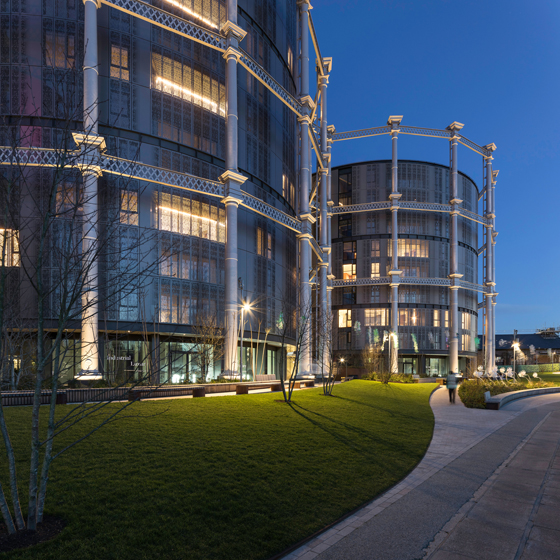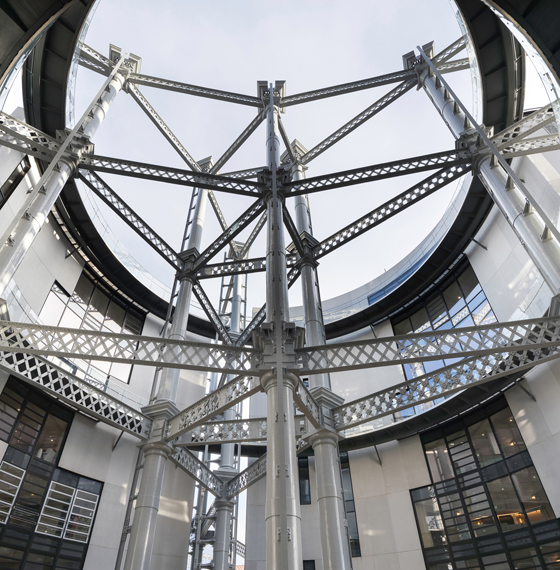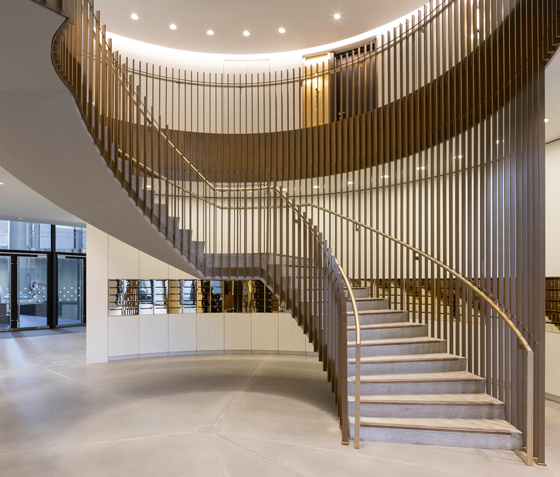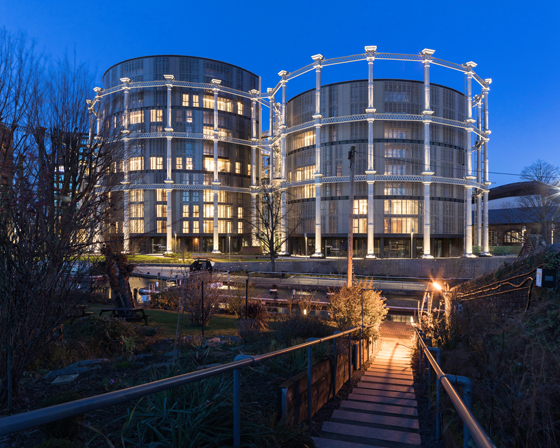Squaring the circle: WilkinsonEyre’s Gasholders London project
Texte par Simon Keane-Cowell
Zürich, Suisse
24.04.18
British architectural practice WilkinsonEyre’s repurposing of a trio of listed Victorian gasholders has reinscribed their status as a London architectural landmark.
It’s not an undertaking for the faint-hearted, adapting a well-known and much-loved landmark structure – at once an exercise in restoration and in delivering new purpose and meaning. Chris Wilkinson, director at respected British architectural practice WilkinsonEyre – which recently completed the transformation of a group of 19th-century, cast-iron gasholders in London’s King’s Cross into the framing device for a luxury-apartment development – explains the challenges and opportunities.
How constraining – or, conversely, liberating – is an adaptive-reuse project creatively, given the need to balance the demands of a structure's new functionality with the desire to preserve the legibility and spirit of its original fabric?
Working on adaptive-reuse projects is challenging but immensely worthwhile. There are many redundant historic buildings that need to be retained. Once one has decided to embark on such a project, it is worth doing it properly and to work with the features of the building. In our case the triplet structure of Gasholders London was listed, so we had to keep them. Integrating old and new makes for interesting architecture.
I believe that the new interventions need to be of the moment, of today and to be read clearly and separately from the historic parts. The project responds to the wider industrial heritage, meeting the inherent constraints with imaginative design; the process of working through those challenges is interesting in itself.
How did you square the circle, so to speak, with your Gasholders London project?
Working with circular geometries creates its own challenges but it can work very well. At Gasholders London, it has resulted in really beautiful ideas. The circular nature of the buildings results in apartments that are laid out to take advantage of natural daylighting, with the living and bedrooms at the outer perimeter. The ‘pie-shaped configuration of the grid forms open-plan apartments. It creates what I call ‘expansive space’.
The design for Gasholders has been developed to create a dynamic counterpoint between new and old. The heavy industrial aesthetic and raw physical materiality of the guide frames contrasts with the lightness and intricacy of the interior spaces, which draw inspiration from the delicate refinement of a traditional watch movement.
What value do repurposed buildings add to the lives of their users?
I think when you have an historic building, the architecture is well-established and there is no danger of it looking dated in a few years. An historic building is long-lasting and as a resident, you are closely aligned with the context of the setting. In our case, Gasholders London is an established landmark, so the identity is very strong. It is the same with Battersea Power Station, where we are working on the restoration and development of the original building into residential, retail and commercial spaces. With both, we are taking on an accepted landmark with which publics – residents, visitors and passers-by - can identify.
...
Images:
Peter Landers (1-6; 8)
James Brittain (7)
© Architonic













